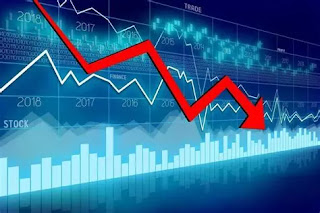South Africa’s economy is in a deep recession that shows no signs of recovery, with weak economic growth the biggest macroeconomic risk to be addressed.
The numbers don’t lie, and the medium-term budget policy statement recently presented to parliament by Finance Minister Enoch Godongwana shows that the road to reforming public finances is still long, despite the optimism that followed the formation of a national unity government after the general elections on 29 May.
Over the past decade, South Africa’s GDP has averaged less than 1 percent, not enough to keep up with population growth, prompting the central bank to acknowledge that recovery must be supported by a sustained increase in real net investment after years of decline.
As the country’s economic crisis continues, the African National Congress-led government has been forced to lower its economic growth forecast for 2024 to 1.1 percent, down from 1.3 percent previously, while also forecasting a significant budget deficit and rising debt over the next three years.
These forecasts are in line with those of economists who have drawn pessimistic scenarios for the state of public finances in the southern African country, where they forecast a consolidated deficit of 5 percent of national output in the fiscal year ending in March 2025.
Public debt reaches nearly 75 percent of GDP
With the deep economic crisis in South Africa continuing, due to a number of structural constraints, economic analysts believe that the government has no choice but to reduce public spending, especially public debt, which has reached worrying levels and has become a real risk for the country, as debt and related borrowing costs continue to rise, moving from $317 billion (5,600 billion rand), equivalent to 74.7 percent of GDP in 2024, to $385 billion, equivalent to 75 percent of GDP, expected in 2027.
The high debt and interest costs pose a major challenge to the South African government, limiting its ability to finance essential service delivery programs. “The challenge we face is the economic growth problem,” Godongwana said in response to the IMF’s call for the South African treasury to impose a debt ceiling.
In order to keep debt and new borrowing under control, the government has already used up $5.6 billion (R100 billion) of the country’s emergency reserve this financial year to repay its loans. The 1.1 percent growth in national GDP in 2024, lower than previously estimated, is a growing concern, while the stagnation suggests that many South Africans will continue to face economic hardship, especially as the cost of living rises.
To contain public spending, the government has had to review its plan to rescue insolvent state-owned enterprises that continue to drain public funds, while the treasury is also aiming to reduce the wage bill for South Africa’s 1.3 million employees. To reduce the wage bill, it recommended a programme whereby senior employees, i.e. 30,000 employees, would voluntarily accept early retirement plans from 2025.
However, economic analysts believe that economic growth and increased investment depend on the government’s partnership with the private sector in strategic areas, such as energy and logistics, where the crisis in these services, which has plagued the public transport group (Transnet) for years, continues to hamper exports and the country’s economy.
Moreover, the global economic forecast, which indicates growth of only 3.2 percent for 2024 and 2025, due to rising geopolitical tensions, confirms that the international landscape is unstable, which makes South Africa particularly vulnerable to these external shocks.
In the face of this economic stagnation, the promise of a brighter economic future by the Government of National Unity should not be just an aspiration, but a commitment backed by concrete policies that alleviate the pressures faced by ordinary South Africans. Therefore, only through inclusive growth and a stable economic environment can South Africa generate the hope and resilience needed to meet all these challenges.







0 Comments